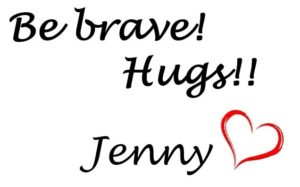Arm your child with the ability to shield herself from anger

“Mom, I don’t like my teacher anymore!” Her comment took me by surprise since I knew she’d been really enthusiastic over the new teacher all year long. I asked her what was going on and she explained that there were some trouble makers in school. The situation had worsened lately and the teacher is often angry in class. She knew she wasn’t the intended target, and that she’d done nothing wrong, but she still felt his irritation get to her. “I feel really sad and guilty when he gets angry, even when it’s not at me”.
Is your child impacted when someone displays anger even when it’s not directed straight at her?
The frequency of emotions
When you have a thought and give it a meaning it will trigger an accompanying emotion. This emotion is felt in your body as energy. It is in fact, now scientifically proven, energy emitted in the form of a frequency wave. The statement “the tension in the room was palpable” is not just a saying anymore. If you test it on yourself you’ll realize what difference there is in feeling different emotions. Imagine being exhilarated and enthusiastic and pay attention to how light this feeling feels. Now compare it to how you feel when you step into anger or jealousy. The negative emotions has a lower frequency and draws you down closer to matter than the more energy filled positive emotions.
Someone who is holding in anger, consciously or out of habit, hiding it behind a forced smile will still be sending at the anger frequency. Since the person isn’t displaying the feeling outwardly people around them will start to feel uneasy. To a child this will feel like an approaching thunder storm, they will prepare for lightning to strike from a clear sky. And lightning is loud and scary.
When anger comes from within the family
As parents we are the first line of reason that children use to make sense of the world. They turn to us to test how to react to the daily situations they’re subjected to. They rely on us as a source of comfort and support. When children get scared they count on us to tell them it’s okay. They need us to hold them and to help them calm back down. We are the ones reassuring them that whatever happens they are never at risk of being abandoned to manage for themselves.
By talking through tough situations, with a trusted adult, children can make sense of scary situations, understand and let go of them. Children rely on us to help them handle other people’s anger. So it’s a double burden on them when the anger comes from us. Not only are they subjected to thunder and lightning at home, the place where they should be completely safe, they’ve also lost the help to unravel the tangled emotions that brings.
Children are naturally egocentric and make everything about themselves. If their parent is upset it’s more than likely that the child will believe it’s their fault. That somehow they’re the cause of the upset, anger or frustration. Children of easily angered parents will often try to find solutions to reduce the risk of that anger. Some become hypersensitive and shy, others start acting like a clown. Some do everything they possibly can to “be good” and do “the right thing”
So what can you do?
If your child is effected by other people’s anger, there are some tricks you can teach her. The first thing is to help her figure out if the situation really was directed at her. I believe in arming my children with the knowledge of how their brain works so I’ve literally told them about how they will have a bias towards feeling that everything is their fault.
By understanding how their own brain works they can find it easier to distance themselves from the situation. Tell your child to prepare for the next time someone gets angry around her. Tell her to start by asking herself if the anger is really directed at her. If it’s not, then instruct her to make a move with her arm as if something passes over her head and to say out loud- “It’s not aimed at me! It’s swishing by! Swish!”

I’ve also told my daughter about her “magic shield”. If she feels anger, or any other uncomfortable feeling emanating from someone, she can push the button. It’s placed in the center of her chest, activating a magic, invisible shield around her entire body. The shield is like an umbrella, impenetrable, keeping the storm and rain out and her safe and dry inside.
Depending on the age and maturity of the child, as well as the severity of the situations she’s impacted by, you can develop the story of the shield.
The use of the story is off course only advisable as a complement to making sure she’s safe. If there’s someone who repeatedly fires outbursts of anger around her it might be better to remove her from that situation. If the situations are less frequent and manageable with the help of the shield then the story has a valuable part 2.
The shield can do more than keep you safe
People do the best they can under the circumstances they’re in. I truly believe that and I try my best to teach this life view to my children. As a consequence I believe that people aren’t bad, only that they make bad decisions. Choosing to think this way gives me power to stay open to people that are acting badly. I don’t close myself of in defense so it’s easier to stay smart. This helps me to imagine the hidden pain that might be the reason for the anger.
If your child has learnt to differ between the idea of understanding people so she can stay smart, versus letting people be mean to her, you can add translation magic to the shield.
If you listen closely the shield will translate the angry words into the real reasons to why someone is angry. Angry words like “Gah, why did you have to spill that glass of water!? You are so clumsy!” is translated to “Gah! I’m sooo tired and stressed about work tonight and my back hurts and I just can’t bear getting down mopping that right now.”
Understanding why someone is angry doesn’t excuse the behavior and it’s always important to support your child in standing up for herself. Encourage her to be clear about her boundaries.
If you need help with managing your anger
If you know you have trouble keeping your own thunder and lightning at bay, I encourage you do everything in your power to change. And while you’re improving your ability to keep your cool, you can lower the negative impact on your children, by talking about it. If you let them in on what’s going on, ask for forgiveness when and if you fail, you’re all of a sudden on the plus side. Not only are you stepping up as the responsible parent taking full ownership of your mess, you’re also demonstrating how to ask for forgiveness.
All of us mess up! We’re all a work in progress. When we know and can do better I believe we do. Don’t let anger live within the walls of your home.
